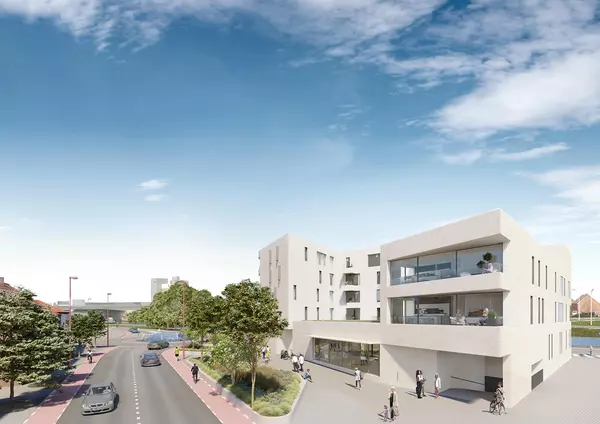Canada’s Housing Market Snapshot: Spring 2025 Trends Across the Nation
Canada’s housing market remains in a period of transition, shaped by subdued sales activity, softening prices, and a growing divergence between regions. April 2025 data points to ongoing weakness in several large urban markets, though there are some early signs that sales may have stabilized in parts of the country following a prolonged slowdown, according to an Edge Realty Analytics report.
National Trends: Modest Sales Drop, Declining Prices
At the national level, seasonally adjusted home sales edged down by just 0.1% in April, marking the fifth straight monthly decline. Compared to the same month last year, sales were 7.5% lower. Despite these figures, some analysts suggest that the bottom for seasonally adjusted sales may have occurred in the first quarter of the year.
Prices continued to fall. The national MLS Home Price Index (HPI) declined 1.2% on a seasonally adjusted basis in April, bringing the index to its lowest level since May 2021. Since peaking, national prices have fallen 18% in nominal terms, and about 29% when adjusted for inflation. However, national numbers mask significant regional variation.
Toronto (GTA): Signs of Stabilization but Deep Inventory Build
In the Greater Toronto Area, April saw a modest 1.8% rise in seasonally adjusted home sales. This comes after a steep decline of 27% over the two preceding months. While this suggests that activity may be stabilizing, sales remain historically low, down 21% year-over-year and at a level consistent with 20-year lows across both the condo and single-family segments. April’s sales tally was the second lowest for that month in at least 25 years, only higher than during the early pandemic lockdowns in 2020.
Price pressures continue to be negative. After seasonal adjustments, Toronto’s MLS HPI fell by 1.6% in April. Compared to a year earlier, average prices across most property types were down between 4.1% and 6.8%. Inventory is rising quickly. Active listings in Toronto climbed 51% year-over-year, surpassing 27,000 for the first time since at least 2004. Months of inventory reached nearly five—the highest since 2000. For condos specifically, inventory was close to seven months, a record high, while single-family homes were at their highest inventory level in two decades.
Vancouver: Slower Sales and Climbing Supply
Vancouver continues to experience a broad-based slowdown. Home sales fell an estimated 4% in April, the fifth consecutive monthly decline, and were down approximately 24% from a year earlier. Sales were weak across all property types, with April marking the third-softest level of activity in the past decade (behind only 2019 and 2020).
Vancouver’s HPI fell 1.5% after seasonal adjustment in April—the largest single-month drop since mid-2022 and the fourth consecutive monthly decline. Active listings rose by 30% year-over-year, with a particularly large build-up in the condo segment. Total months of inventory stood at 7.5 in April, well above long-term averages. Single-family inventory is also tracking notably high relative to historical norms.
Calgary and Edmonton: Cooling Activity, Diverging Prices
Calgary and Edmonton both saw sales dip in April. Calgary recorded a 4% month-over-month decline, returning to sales levels last seen in mid-2020. Edmonton sales slipped by 2%, and early indicators suggest the market may be topping out. Both cities are now posting sales below year-ago levels, though Edmonton has recently seen stronger relative performance. Notably, Edmonton’s home sales have now overtaken Calgary’s.
Calgary’s prices declined slightly on an annual basis in April, marking the first year-over-year decline since 2020. Edmonton, in contrast, was still experiencing price growth, with double-digit gains over the past year.
Inventory trends are moving in opposite directions. Calgary’s active listings surged 115% year-over-year, while Edmonton’s inventory has remained flat, still sitting at decade lows. Construction in Calgary continues to be robust, especially in the rental segment, but there are signs that overall construction volumes may have peaked. Edmonton, meanwhile, may not have enough new homeowner supply in the pipeline to meet demand, which could support further market strength.
Quebec: Steady Prices and Modest Activity
Quebec continues to stand out for its relative price stability. The province’s MLS HPI was up 9.3% year-over-year in April. Quebec City, in particular, has seen notable price appreciation over the past year. Montreal has shown more moderate trends, with stable pricing and relatively balanced inventory levels.
Sales activity in Quebec was modestly higher in April, up 2.0% month-over-month on a seasonally adjusted basis, which contrasts with the broader national decline.
British Columbia: Rising Inventory, Falling Prices
Province-wide, British Columbia saw a 2.3% decline in home sales in April. Prices fell 1.3% year-over-year, contributing to the overall national decline. Active listings rose 20.2% compared to last year, reaching a new decade high. Months of inventory across the province climbed to 7.8, the highest since 2012, with most of the buildup concentrated in urban markets like Vancouver.
Construction Activity: Rentals Dominate, Condos Decline
Across Canada, total housing starts jumped by 30% in April, driven almost entirely by purpose-built rental projects. A record 9,900 rental units began construction during the month, and 93,000 rental units were started over the past 12 months—a new high. There are now 154,000 rental units under construction, equal to about 6.2% of the existing rental stock.
At the same time, single-family and condo construction has dropped off sharply in key areas. In Toronto, the number of dwellings under construction fell 5.7% in April, and condo starts collapsed nearly 70% year-over-year in Q1. Only 160 new condos were sold in March, compared to 3,500 in the same month of 2021, suggesting that future condo starts will remain low. This could result in a tighter resale market in the future, if population growth remains stable.
In Vancouver, overall construction volumes have also declined. The number of dwellings under construction fell 1.2% in March and 4.2% over the past four months. The drop has been most pronounced in the single-family and condo segments.
Rental Market Signals: High Supply, Slowing Demand
In Toronto, rental inventory is expanding rapidly. The number of rental listings on MLS in April hit 16,420—a record for the month. Average condo rents were flat month-over-month and down 3.1% compared to a year earlier. While investor cash flow is improving due to falling purchase prices and lower interest rates, growing supply and early signs of population slowdown may lead to more balanced rental conditions over the next few years.
Vancouver’s rental market is also seeing high levels of new supply. Similar to Toronto, condo and single-family construction is tapering off, while rental development remains strong.
Categories
Recent Posts











